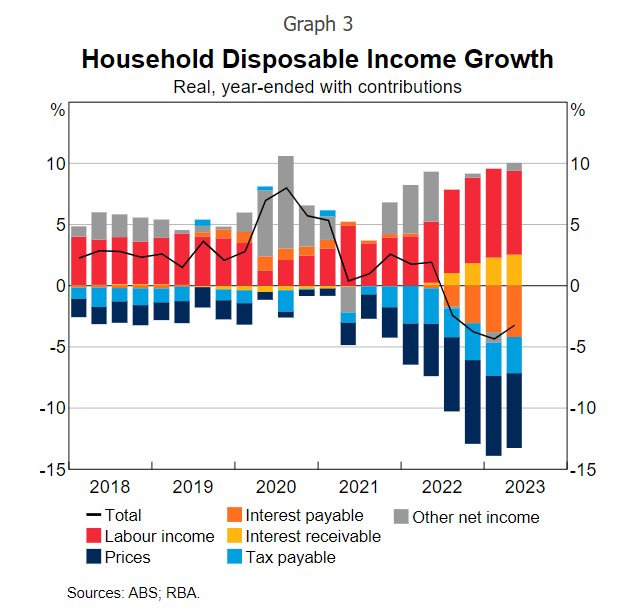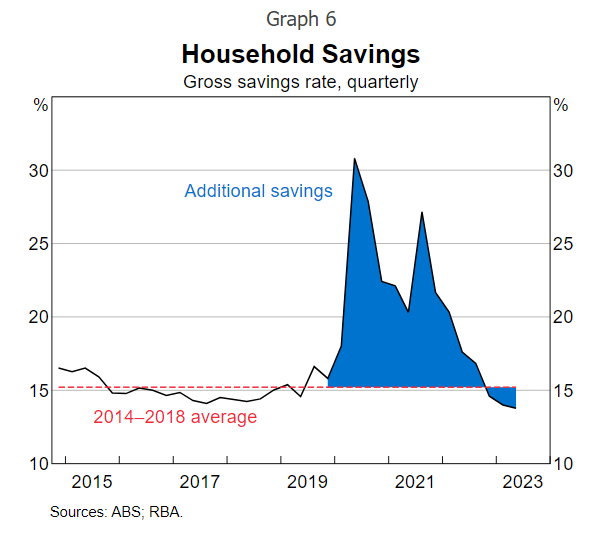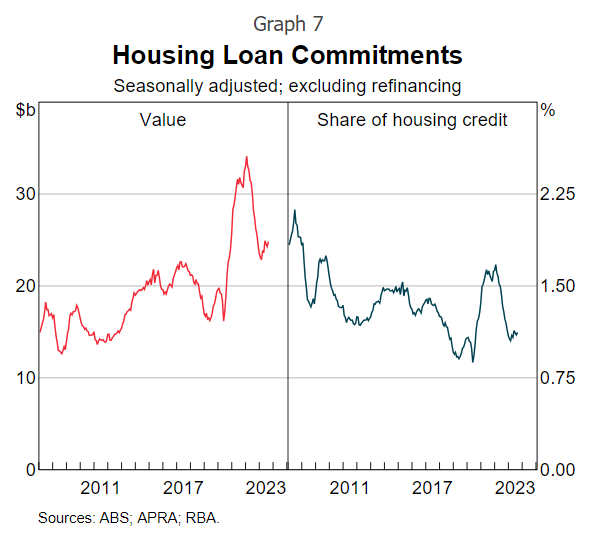Are the five horsemen of interest rates actually doing their job?
Interest rates are the blunt, forceful tool used by central banks to manage inflation.
And after 400 basis points of RBA hikes since May 2022, there wouldn't be many Australians disagreeing that it has been a bludgeoning.
Critics of the hikes have argued that the RBA has indiscriminately penalised the mortgage (and other debt) holding populous for issues outside of their control (such as gummed-up global supply chains), but there’s more to the process than that.
And there is now some evidence that the hikes are hitting the metrics that matter – consumption, employment and inflation.
In an address to a Bloomberg event on 11 October, Christopher Kent, Assistant Governor (Financial Markets) at the Reserve Bank, discussed the five channels of transmission for interest rates to bring down inflation and the data he is seeing right now. Without giving too much away, Kent believes we are reaching the peak and notes that markets have focused on November for tightening - with good cause.

If you’ve ever wanted to know what the RBA was thinking, this is your insight into what the Board watches and why.
The five channels (or horsemen) include:
- Cashflow
- Inter-temporal substitution (more simply – the savings-investment channel)
- Asset-price
- Credit channel
- Exchange rate channel
Here’s what you need to know about each.
Cashflow
This is the most noticeable channel for Australians and, typically, the first to be affected.
“When interest rates go up, households pay more on their debt and earn more on their savings,” Kent explains.
The RBA effectively monitor the extent that this starts to impact on metrics like mortgage repayments as a measure of household disposable income, overall household savings and in turn, consumer consumption. You might think that higher saving earnings would cancel out higher debt repayments, but Kent points out that the level of household debt is far higher than that of savings.
Some interesting stats of note here:
- Required household mortgage payments are almost 10% of household disposable income currently – this is above estimates of the 2008 peak when rates were 7.25%.
- Share of fixed interest rate mortgage loans have dropped to 20% from 40% in early 2022.
- RBA estimates suggest the cash rate increases since May 2022 will have reduced overall household spending by around 0.4-0.8% through the year.

Savings-investment
Higher interest rates tend to encourage savings and discourage businesses from investing. It is also noticeable when it comes to dwelling investment – fewer homes are built and renovation activity declines. From an Australian perspective, this has been problematic at a time where supply is severely constrained and we have boosted immigration numbers. It may also seem contradictory at a point where State Governments have actively planned for increases in housing supply, though Kent says these plans are factored in their own forecasts.
“In the current cycle, higher interest rates may have also played a role in slowing the rate at which many households have run down the sizeable stock of additional savings accumulated during the pandemic,” says Kent.
He notes that the household savings ratio has only recently dropped below pre-pandemic averages.

Asset prices
Assets are generally priced based on the discounted value of the expected future cash flows they produce. This means in a rising rate period, the discount factor increases and the value of the asset decreases.
What happened to house prices, I hear you ask?
Housing prices are influenced by a range of factors beyond the cash rate. Kent credits the current increase in prices, in part, to the surge in the population alongside low construction levels. While the RBA watches house prices, it is typically more concerned with borrowing and supply patterns than the asset itself.
Credit channel
Higher interest rates can make lending riskier – the risk of default on repayments is obviously higher. It’s also more expensive for businesses to borrow. What this means is the serviceability assessments used by institutions like banks becomes tighter.
“Under these assessments, the increase in the cash rate since May 2022 has seen the borrowing capacity for a typical household fall by around 30 per cent,” says Kent.
ABS data shows that housing loan commitments have fallen.

The exchange rate
Generally speaking, increasing cash rates is supportive of the Australian dollar and would help lower inflation by improving Australian buying power internationally and encouraging cheaper imports. But interest rates overseas have also been rising to combat inflation, so the Australian dollar has actually depreciated.
The sum total of channels
Taken together, you might wonder what this all means going forward.
Kent believes we are coming into peaks for interest rates where we can start to monitor evolving data. We may see some more tightening, but unless there are significant changes, it shouldn’t be as dramatic or sizeable as we’ve seen since May 2022.
Most commentators are giving November the nod as the timing for a final rate rise. It’s worth highlighting that the next inflation print will be released by the ABS on 25 October covering the September quarter. It will be a critical indicator of what might occur in the November RBA meeting – the RBA will want to see evidence measures are hitting – ergo, signs of decline.
Of course, if we’ve learnt nothing from “no rate rises until at least 2024”, then we’ve learned this.
Anything can change, and while the data looks reasonable to date, there’s still a risk inflation could spike up again. The jump in oil prices should be one clue to be wary if nothing else.
3 topics

